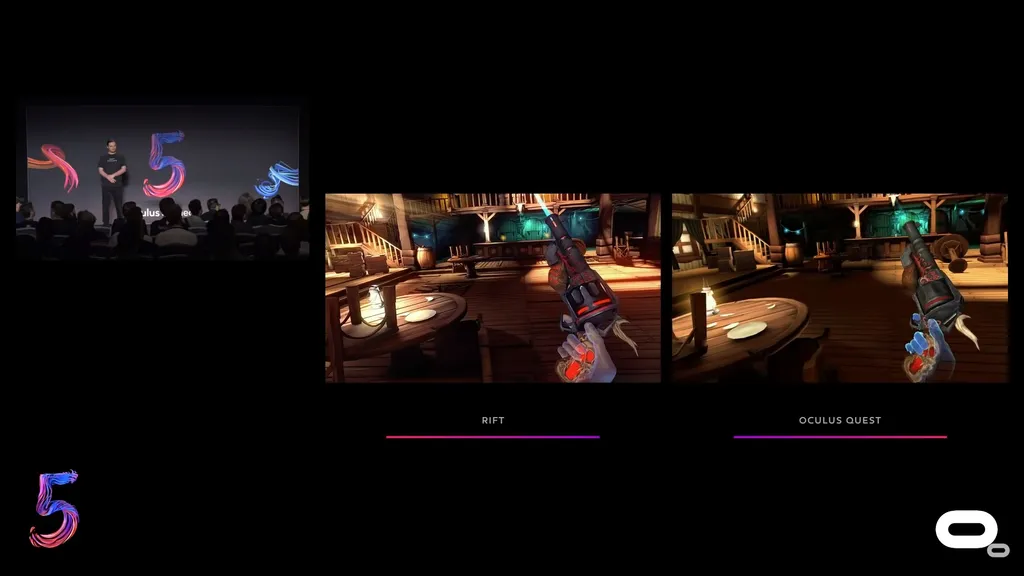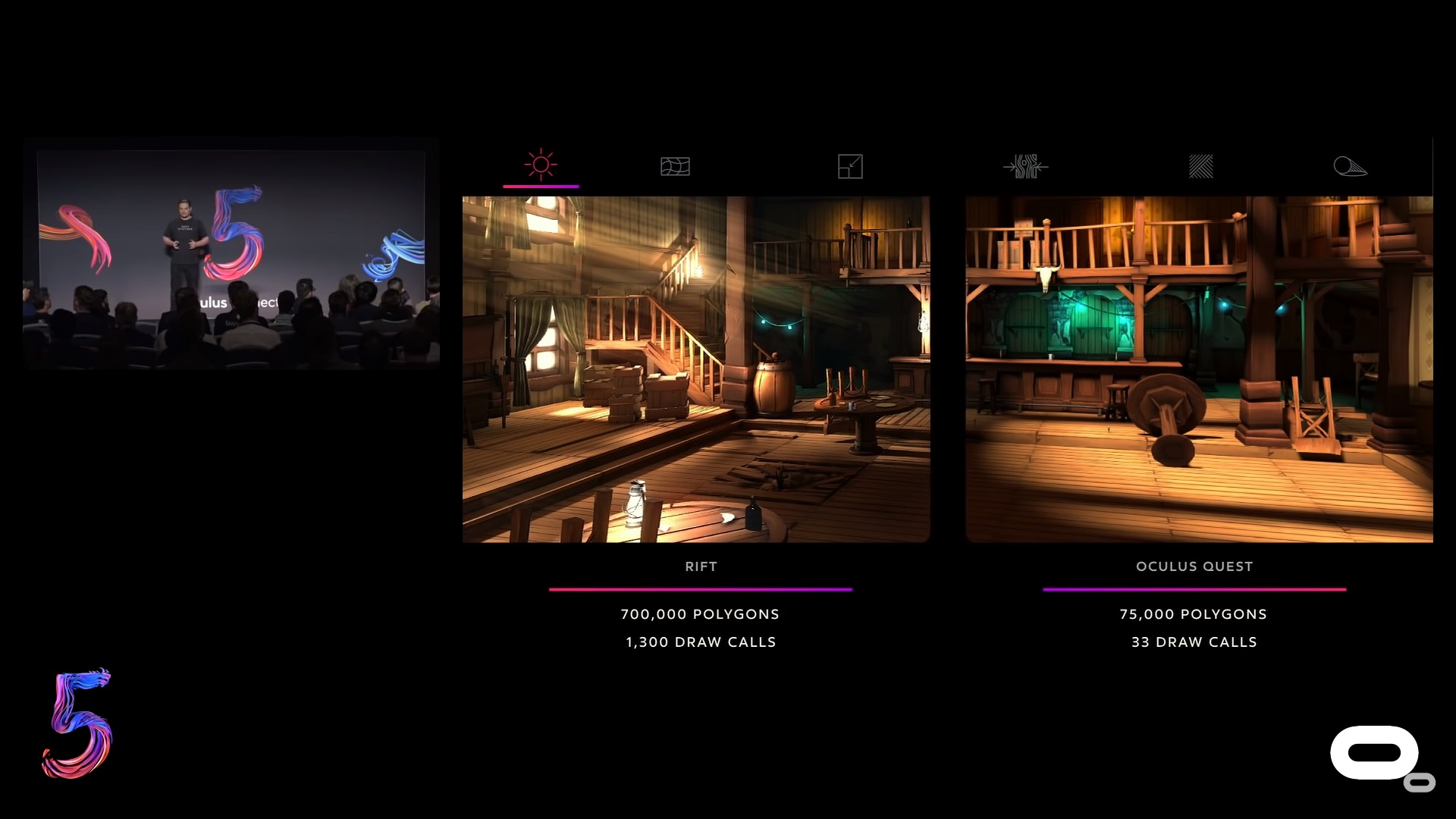Oculus Quest, Facebook’s new VR standalone headset, is set to bolster its library with a host of ports of Oculus Rift titles when it launches next year. But, running with mobile hardware, can Quest really hope to achieve anywhere near the level of visual fidelity seen on the Rift?
As Developer Relations Engineer Gabor Szauer showed at Oculus Connect yesterday, it can get pretty darn close. Szauer ran a session titled ‘Porting Your App to Project Oculus Quest’ in which he detailed various optimizations made to one of Rift’s premier shooters, Dead and Buried, that allowed the team to squeeze the game onto Quest. This was the result:
Not bad, right? Now, obviously, Oculus itself has intimate knowledge of both PC and mobile development on its hardware, not to mention the limitless resources of Facebook to make these ports happen. It’s also true that Dead and Buried isn’t the most demanding Rift game (a sort of port is on Go, too). Still, Szauer’s tips for porting games should give developers a lot of help.
For starters, the developer cited a key component of any optimization system: baking the app’s lighting. This essentially means lighting is a static feature within an environment rather than an intensive dynamic system that sucks up processing power. The less Quest has to remember, the more it can focus on things that really matter.
Other tips were very much along the same lines. Szauer suggested developers merge objects in a room. Dead and Buried, for example, features 915 objects on Rift but just two in the Quest version which, yes, will mean you can pick up everything in a room, but it will give Quest a much easier time letting you walk around in it.
Another major factor is texture compression. Szauer showed examples of where texture qualities on characters and environments had been lowered ever so slightly. The difference to you and me is hardly noticeable but, as Szauer said: “Where we can’t really tell, the GPU can most certainly tell.
“This is kind of a trend you see in all the assets,” he continued. “Less textures, fewer polygons, preferably just one material so the whole thing can just render in one draw call.”
Games like Moss, Superhot and Robo Recall will likely also be calling upon these tricks for their announced ports for Quest. We’re going to be really interested to see how they turn out.
You can see Szauer’s full talk below. Hes’ got plenty more tips. As for Quest, it’s out next spring for $399.



























